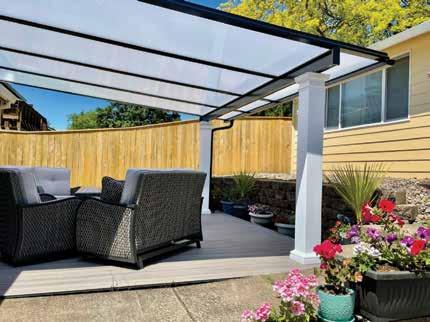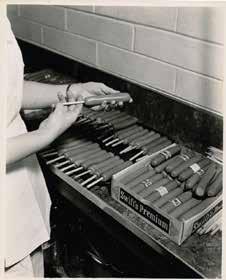









facebook.com/coltoncafe












facebook.com/coltoncafe

May 25: Worship Concert - 4pm
June 13: Don Mitchell - 6pm
June 28: Timothy James - 7:30pm


July 19: 75th Anniversary Car Show & Johnny Excelsior live - 5pm
July 27: Trent Beaver - 5pm
August 9: ParkRoad - 7pm
August 30: CCR Tribute - 7pm
September 20: Volkstoberfest - 4pm

Wed & Thu: 8:30am - 8pm, Fri: 8:30am - 8:30pm, Sat: 8am - 8pm, Sun: 8am - 7pm
















By Robert Matsumura, Active Media
Every year on April 22nd, millions of people around the world celebrate Earth Day, a day commemorating environmental protection and raising awareness about our planet’s well-being. But how did Earth Day come about? The story of Earth Day is both fascinating and inspiring, a testament to how a collective push for change can have a lasting impact.
The Spark of the Movement
Earth Day actually dates back to the late 1960s when environmental concerns swelled across the United States. Issues of water pollution, air quality, pesticide use, and the loss of wildlife were looming large in the public consciousness. Rachel Carson’s 1962 book Silent Spring had already brought to light the dangers of pesticides, and a growing concern for the environment was beginning to take root.
It wasn’t until 1969, however, that the idea of Earth Day began to form. Senator Gaylord Nelson from Wisconsin — alarmed by the lack of political attention to environmental issues —vowed to take action. He envisioned a nationwide teach-in focused on the environment to engage the public and pressure politicians to embrace the environmental cause. Nelson drew inspiration in part from the student protests of the 1960s, which demonstrated how grassroots movements could galvanize the public and bring about real change.


Earth Day was born on April 22, 1970. Nelson, with the assistance of activist Dennis Hayes, mobilized an astonishing 20 million Americans across the country — about 10 percent of the U.S. population at the time — who came together in rallies, teach-ins, and protests. The movement was not just about protesting, but about generating a dialogue around the need for environmental regulation and conservation.
The first Earth Day was a monumental success. People from all walks of life came together, including students, teachers, scientists, and activists. For the first time, environmental issues were discussed on a grand scale, clearly showing that protecting the Earth was no longer a niche concern but one that deserved national attention.
The success of Earth Day extended far beyond rallies, however. Significant changes in U.S. policy resulted from this event. In the wake of the first Earth Day, Congress passed major environmental legislation, including the Clean Air Act, the Clean Water Act, and the Endangered Species Act. The Environmental Protection Agency (EPA) was also created in 1970. It was clear that public opinion had shifted, and lawmakers took notice.
Although Earth Day was born in the United States, its message resonated around the world. In 1990, Earth Day went international, with 200 million people in over 140 countries participating. Since then, Earth Day has continued to grow. Events now take place in countries across the globe, with the Earth Day Network actively coordinating the activities.
Today, Earth Day is more relevant than ever. As the planet grapples with climate change, deforestation, and diminishing biodiversity, Earth Day is a reminder that everyone has a role to play in protecting our environment.
So this April 22nd, whether you’re planting a tree, cleaning up a local park, or simply recycling a plastic container, remember that Earth Day is a day to celebrate the planet we all share, ensuring that it continues to be a healthy and enjoyable place for generations to come!












By Angie Helvey, Active Media
The nonprofit 100+ Who Care dedicates itself to unwavering action. The goal is to unite 100 or more individuals, each donating $100 twice yearly, culminating in a $10,000+ donation to a local nonprofit organization. The money is collected and donated at semi-annual events held in April and October, and this month the committee is hoping for its largest turnout to date. “It’s nothing short of magical when you bring that many generous, caring people together to do something great,” says organizer Vanessa Zimmerman.
Vanessa, a mortgage broker by trade, started the Clackamas County chapter of 100+ Who Care in 2023. “It’s important to me to leave a legacy of positivity and generosity; this was the perfect opportunity,” she explains. Though the program is nationwide, there are no templates or instructions, so Vanessa started from scratch with just a website and a Facebook page. Finding that first 100 people took some legwork, but the initiative has continued to grow, and at last year’s April event they raised a staggering $11,900! Last October’s event they raised an impressive $10,000 for Fort Kennedy.
The upcoming event for 100+ Who Care is planned for April 24 and is graciously hosted, per usual, by Lori and Ken Arrigotti in the Antonio Ballroom above Backstop Bar & Grill, 211 N. Grant St., Canby. Lori is part of Vanessa’s committee, along with Amy Baez, Brooke Toma, Kerri Oliver and Brittney Hopping, who all work hard behind the scenes to prepare for the occasion. Local nonprofits can apply or are nominated by members, and three of them, names drawn from a hat, are invited to attend and share their stories. The committee provides locations where members can drop off their $100 check ahead of time if they can’t be there in person. They currently have over 130 members, and the group keeps growing.


The event begins at 5 p.m. with a social and no-host bar where the three nominated organizations are invited to set up booths and educate members as to what they do; the program then starts at 6 p.m. The previous winner shares how the donated funds grew their programs, followed by a short presentation from each nonprofit before the group votes and a winner is chosen! The $10,000 is presented on a giant check, and any additional funds raised will be split between the two remaining nonprofits. The excitement in the room is palpable as everyone watches the impact of collective giving in real time!
The nonprofit 100+ Who Care is all about creating visibility for the organizations that make a difference in our community. “One of the primary objectives of this program is to bring awareness to these local nonprofits,” Vanessa explains. “There are so many, and most of us aren’t aware they exist.”
“It’s great to hear how the organizations utilize the funds, and we want to share that impact with the community,” says Vanessa. The group’s members are encouraged to bring their friends and family to events. If a non-member would like to join, a QR code is provided for sign-up, and after a $100 donation they are given a ballot to vote for a nonprofit. The nonprofits for the upcoming event include: A Village for One, Michelle’s Love, and The Father’s Heart Street Ministry.
On Thursday, April 24 at 5 p.m., 100+ Who Care Clackamas County will hold its next event. For more information, visit their website at www.100pluswhocare.com, or contact Vanessa at 503-459-8065 or 100pluswhocare@gmail.com.











































By Angie Helvey, Active Media
It’s spring — that magical time of year when winter slowly sneaks out the back door and suddenly, it’s like the world comes alive again. Celebrate the season this year at the 36th Annual Spring in the Country Bazaar, a boutique showcase of all the region’s most talented makers of gifts, crafts, home decor and more!
Spring in the Country Bazaar is the counterpart to the Country Christmas Bazaar, which will celebrate 53 years this winter. Both events are held in the Main Pavillion at Clackamas County Fair & Event Center and feature over 100 vendors. “Probably 75% of them are from Canby, Molalla, Wilsonville — all local people,” says owner Mary Anderson. She took over the business in November 2009 and is the fourth owner to date. “The vendors have become extended family to me. It’s more than just a job.”
This year’s spring shopping extravaganza takes place from April 6–12. It starts with a preview on Sunday, 10 a.m. to 5 p.m. — it requires a $5 admission for early shoppers. Free admission for the rest of the event, Monday–Friday, 10 a.m. to 7 p.m. and Saturday, 10 a.m. to 5 p.m. Mary and her team,


which is mostly family, work tirelessly to transform over 7,000 square feet of blank slate into an enchanting boutiquestyle experience. “It’s not a table show with individual vendor booths — you feel like you’re in a store,” Mary explains.
The bazaar features sections with unique themes like classic Americana, children’s wearables, antiques and the gourmet food display, where shoppers can sample homemade jams, salsas, candy, soups and more. From artists and woodworkers to soap-makers and quilters, the variety of artisan excellence is astounding! Whether you’re picking out spring decor to brighten your living spaces or searching for a gift, there’s something for everyone.
Bags for customers to use while shopping are available at the door, but attendees should bring their own to take treasures home. Canned food donations are optional and collected upon entry. Spring in the Country Bazaar partners with Fort Kennedy, a local nonprofit that helps unhoused and low-income veterans connect with services to get clothing, food, hygiene items and other essential services. A portion of the proceeds from the preview sale and any canned food collected at the door will be donated to their organization.
After you’ve perused all the elegant displays, the team will take payment for your purchases, wrap up fragile items and help coordinate your pick-up of any larger pieces. Both the Christmas and Spring Bazaars draw crowds from all over. “We have people from around the country who fly in just to attend,” Mary says. Visit their website and sign up for their mailing list, which currently has over 9,000 members, to receive a twiceyearly postcard with upcoming bazaar dates for both shows.
For more information on Spring in the Country Bazaar or Country Christmas Bazaar, please visit their website at www. countrybazaars.com.




























By Reif & Hunsaker, P.C.
By Reif & Hunsaker, P.C.
MMany clients express concerns about the federal estate tax, Oregon estate tax, and whether gifts are subject to gift tax. It is important to understand how federal and state estate taxes, as well as gift tax exemptions, will impact your overall estate strategy. While these concepts can be complex, we’ll review each of them briefly.
any clients express concerns about the federal estate tax, Oregon estate tax, and whether gifts are subject to gift tax. It is important to understand how federal and state estate taxes, as well as gift tax exemptions, will impact your overall estate strategy. While these concepts can be complex, we’ll review each of them briefly.
The federal estate tax applies to the transfer of your property after your death. As of 2025, the federal estate tax exclusion is $13.61 million per individual, meaning that only estates valued above this threshold are subject to the tax. For married couples, the exclusion effectively doubles (with “portability”), allowing a combined exemption of $27.22 million. If your estate exceeds these amounts, the amounts in excess may be taxed at a rate of up to 40%. Planning for the federal estate tax is not something that most people need to be concerned about but there are strategies to reduce or avoid this tax. Please note that the federal estate tax exemptions may change significantly after December 31, 2025 (at the expiration of the Tax Cuts and Jobs Act passed in 2017).
The federal estate tax applies to the transfer of your property after your death. As of 2025, the federal estate tax exclusion is $13.61 million per individual, meaning that only estates valued above this threshold are subject to the tax. For married couples, the exclusion effectively doubles (with “portability”), allowing a combined exemption of $27.22 million. If your estate exceeds these amounts, the amounts in excess may be taxed at a rate of up to 40%. Planning for the federal estate tax is not something that most people need to be concerned about but there are strategies to reduce or avoid this tax. Please note that the federal estate tax exemptions may change significantly after December 31, 2025 (at the expiration of the Tax Cuts and Jobs Act passed in 2017).
In addition to estate taxes, the federal government imposes a gift tax on certain lifetime transfers of wealth. However, there are key exemptions that allow you to make gifts without filing a federal gift tax return or potentially paying gift taxes. For 2025, the annual exclusion amount is $19,000 per recipient, meaning you can give up to this amount to as many people as you like without it counting against your lifetime gift and estate tax exemption. Additionally, certain gifts are entirely exempt from the federal gift tax return requirement, regardless of the amount. These include gifts to US citizen spouses, gifts to pay educational or medical expenses, and charitable contributions. It’s important to note that if you exceed the annual exclusion amount or make non-exempt gifts, you will need to file a federal gift tax return (Form 709). However, you won’t owe taxes unless your total lifetime gifts exceed the federal estate and gift tax exclusion. Note: Oregon does not have a gift tax.

To protect your estate and ensure that your assets are distributed according to your wishes, it’s important to consider both federal and Oregon estate tax rules. Estate planning is not a one-size-fits-all solution, and a comprehensive strategy tailored to your financial goals can help minimize taxes while maximizing the legacy you leave behind.
While federal estate tax thresholds are quite high, Oregon imposes its own overly-burdensome estate tax, on estates valued at $1 million or more. Oregon’s estate tax rates range from 10% to 16%, depending on the size of the estate, and affect more and more people every year. This low exemption threshold means that many more families are subject to Oregon’s estate tax when compared to the federal tax. Unlike the federal estate tax, Oregon does not offer portability between spouses, making appropriate planning extremely important. There are strategies to maximize the Oregon estate tax exemption and reduce the amount of estate tax owed.
In addition to estate taxes, the federal government imposes a gift tax on certain lifetime transfers of wealth. However, there are key exemptions that allow you to make gifts without filing
While federal estate tax thresholds are quite high, Oregon imposes its own overlyburdensome estate tax, on estates valued at $1 million or more. Oregon’s estate tax rates range from 10% to 16%, depending on the size of the estate, and affect more and more people every year. This low exemption threshold means that many more families are subject to Oregon’s estate tax when compared to the federal tax. Unlike the federal estate tax, Oregon does not offer portability between spouses, making appropriate planning extremely important. There are strategies to maximize the Oregon estate tax exemption and reduce the amount of estate tax owed.
a federal gift tax return or potentially paying gift taxes. For 2025, the annual exclusion amount is $19,000 per recipient, meaning you can give up to this amount to as many people as you like without it counting against your lifetime gift and estate tax exemption. Additionally, certain gifts are entirely exempt from the federal gift tax return requirement, regardless of the amount. These include gifts to US citizen spouses, gifts to pay educational or medical expenses, and charitable contributions. It’s important to note that if you exceed the annual exclusion amount or make non-exempt gifts, you will need to file a federal gift tax return (Form 709). However, you won’t owe taxes unless your total lifetime gifts exceed the federal estate and gift tax exclusion. Note: Oregon does not have a gift tax.
To protect your estate and ensure that your assets are distributed according to your wishes, it’s important to consider both federal and Oregon estate tax rules. Estate planning is not a one-sizefits-all solution, and a comprehensive strategy tailored to your financial goals can help minimize taxes while maximizing the legacy you leave behind.
The information provided in this article does not, and is not intended to, constitute legal advice; instead, all information and content in this article is for general informational purposes only.






By Dennis McNabb, Active Media
At its core, art can really be perceived as a conversation with the world around us. In the right hands, it has the ability to shape, question and redefine our understanding of reality. In the hands of artist Rita Robillard, that dialogue has always centered on the nature of place — its meaning, its memory, and the ways in which it molds who we are as individuals. Front and center on the main page of her website, she poses the question, “How does place affect our values and differ from urban and rural and eastern and western vantage points?” She continues, “In this time of migratory reality, how do we come to know the textures, moods, and values of new places?” And really, in a world where the internet is bringing divergent cultures from around the globe into closer proximity, what could possibly be more important than developing a more profound understanding of place? Rita grew up in New York City. Her father was a musician who sadly passed at a young age. Her mother, a strong and resourceful woman, raised Rita and her sister to be both academically and artistically inclined. Rita learned at a young age that she was naturally adept at painting and she tested into The Cooper Union, a prestigious art college in New York. Later,
she transferred to UC Berkeley to study printmaking and began teaching on the side. Later still, she transferred to WSU as a full-time professor (teaching printmaking), and finally to Portland to teach drawing and graduate classes as well as chairing the art department at PSU. Always a dedicated and enthusiastic teacher, fully committed to her students and her craft, she was still, at heart, a painter first and a printmaker second.

Over the years, as she continued painting and exploring various mediums, methods, and themes (all while teaching), she assembled an impressive and expansive body of work. Focusing on nature instead of chasing the fashionable styles and themes of the times, her art has a vibrancy and relevance that is missing in the works of some of her contemporaries. Inspired and informed by her travels, her paintings represent real places from real times. They are places that, in some cases, no longer exist and moments that have long since passed, yet through Rita’s keen eye and deft brushwork, they are forever immortalized.

Rita Robillard’s mixed-media work has been included in over 100 museum and gallery exhibitions all over the world. Her pieces are included in over 30 public collections, and she has served on several boards and art committees. She is an invaluable member of our local art community here in Portland. Represented by Bob Kochs, her work was last seen in July of 2024 at the Augen Gallery in downtown Portland. That exhibit, The Amazon in Rio, was met with huge success. For more information or to inquire about purchasing her work, check out her website: ritarobillard.com, or contact Bob Kochs at the Augen Gallery: 503-544-6623.

• Doug Fir #2 & Better
2x4, 2x6, 2x8, 2x10, 2x12
• Pressure Treated
2x4, 2x6, 2x8, 2x10, 2x12 4x6, 6x6 & 6x8

• Fiberglass Insulation
• Roxul Insulation
• Sheet Insulation Gutter

• Plastmo K-Style
• Plastmo Classic Half Round
• Galvanized 4” K-Style

Plumbing
• Pex Pipe & Fittings
• PVC, CPVC, & ABS Pipe
• Fittings, Glues & Tools
• Sewer & Drain
• Noncertified Plywood
• #1 CDX
• CCPTS
• Pressure Treated Plywood
Pole Building Kits are available to fit your needs!
Contact Greg for a Custom Quote!
• Architectural Roofing
• Metal Roofing

• Chain Link
• Cedar Fencing
• Trex Decking
• Cedar Decking



• Blocks
• Pavers
• Retaining Wall Stones

Ag Fencing
• T-Posts
• PT Round Posts
• Field Fence
• Stable Mesh
• Barbed Wire
Electrical
• Electrical Wire
• Conduit & Fittings
• Boxes & Breakers


• Switches, Outlets & More!
• Repair Materials Power Tools & Hand Tools
• 4 Paint Lines
• Interior/Exterior
• Brushes/Rollers
• Tape
• Drywall Repair
• Sakrete Products
• Rebar

• DeWalt
• Milwaukee
• Senco
• Stanley
• Concrete Form Materials Hardware
• Nails by the Pound Paint

• Nuts & Bolts
• Fasteners
• Pneumatic Fasteners
• Simpson Products




By Patti Jo Brooks, Active Media
During a heavy rainfall, do you peer out the window and think of Multnomah Falls? Every year, sometimes twice a year, it’s the same story — nature’s loving embrace has graced your roof and gutters with leaves, pine needles, twigs, branches, moss and other sordid debris. Take action and call Pacific Gutter Company, your local Gutter Shutter exclusive dealership and experience the benefits of the Gutter Shutter system. Enjoy the Pacific Northwest’s rainy days stress-free, thinking only of the thriving flora and fauna nurtured by the rain.
Serving the Portland Metro Area including Vancouver and extending south to Eugene and Roseburg, Pacific Gutter Company is Josh Lowe’s newest addition to his family-owned and -operated businesses. Purchasing the highly reputable Pacific Gutter Company in 2024, that came with the exclusive Gutter Shutter product, gave Josh the ability to better serve the local communities.

A high-performance gutter system, Gutter Shutter stands apart from any other gutter system on today’s market.
Designed with an extralarge 6-inch width, the gutters are completely enclosed, keeping out debris while channeling 20 percent more water into the gutter than the standard 5-inch systems.
“They offer the most durable protection of any gutter and are the strongest, guaranteed no-clog gutter system to be found,” says team member Breck Paschal. They also protect against rot and water damage.
A member of the Contractor Nation, Pacific Gutter Company is backed with quality training, support, and excellence. They are BBB Certified and proud to be recognized by Contractor Nation with a Top Dealer Award. Committed to client satisfaction, Pacific Gutter offers free, no-obligation estimates. Services are backed by product warranties and are 100 percent satisfaction guaranteed. Financing options designed to fit your specific project are also available. Be sure to ask about veteran, senior and first responder discounts.
A collaborative work environment filled with positive energy, employee training and skills development is a major focus for owner Josh Lowe. No matter which of his three


business divisions they’re a part of — Pacific Gutter, Dr. Energy Saver, or Klaus Roofing — Josh wants to make sure the employees are happy and feel valued. “I think collaboration
and growth are the primary goals we have here, and that kind of drives our culture,” Breck relates. “It’s a very supportive environment.”
Owners Josh and Amy Lowe, have been dedicated to improving homes in the area for almost two decades and are passionate about energy efficiency and worry-free solutions for their clients. Josh founded his first company at age 27, which in 2013 had evolved into the new brand known as Josh Lowe’s Dr. Energy Saver. Klaus Roofing Systems of Oregon was added in 2020, and in 2024 he purchased Pacific Gutter Company, that came with the exclusive Gutter Shutter product.
Guided by faith, family, and traditional values, Josh and Amy prioritize work-life balance and spending time with their two daughters. A nature-loving Pacific Northwest
family, they enjoy fishing, boating, camping, and marathon training in Oregon’s great outdoors.
Pacific Gutter Company is located at 9587 SW Tualatin-Sherwood Rd. in Tualatin. Give them a call at (503) 7746580 or visit PacificGutterShutters.com to learn more and get your free quote!
















A perfect movie for springtime, this is an adventurous modern retelling of Beatrix Potter’s beloved classic, full of energy and sweet humor. The story follows the mischievous Peter Rabbit as he and his rabbit siblings wage a rivalry with Thomas McGregor for control of their country garden. With gorgeous animation, a charming English countryside, and a story full of slapstick comedy, the movie captures the air of renewal and adventure that defines spring. Unlike the original books, where old Farmer McGregor is the rabbits’ main adversary, this movie introduces Thomas McGregor, his great-nephew. A meticulous cityslicker from London, Thomas inherits his late uncle’s farm and initially wants to sell it — until he discovers Peter and his family invading the garden. What follows is a ridiculous rivalry between Thomas and the rabbits. The movie offers a surprisingly heartfelt journey about family, friendship, and learning from your mistakes. Starring James Corden, Rose Byrne, Domhnall Gleeson, Margot Robbie, Daisy Ridley, and Elizabeth Debicki. Rated PG for some rude humor and action.

Few movies capture spring quite like The Sound of Music. The story follows Maria, a free-spirited postulant (woman training to be a nun), who is sent to be the governess for seven von Trapp children. Through music, kindness, and an unshakable zest for life, Maria breathes new life into the family — just as Austria faces the impending rise of the Nazi regime. The stunning outdoor cinematography, from the lush meadows to the blossoming romance between Maria and the Captain, makes the movie feel as fresh and invigorating as spring itself. And this is more than just a picturesque musical — as the von Trapps face difficult choices under Nazi occupation, their courage and devotion to each other creates a powerful message of hope and resilience. The movie somehow blends joy, romance, and suspense, making it an unforgettable experience. Starring Julie Andrews, Christopher Plummer, Eleanor Parker, Richard Haydn, and Peggy Wood. Rated G, but please note themes of Nazi occupation, strict parenting, traditional gender roles, and religious life.

Young love, springtime in high school, and prom. A loose, modern adaptation of Shakespeare’s comedy “Taming of the Shrew,” 10 Things is an iconic ’90s teen rom-com. The story follows Kat, the “shrew” (a smart, independent, rebellious woman) and her sister Bianca. Bianca wants to date but can’t until Kat does. Cameron, a new student, falls in love with Bianca but she wants to date Joey, a rich bad boy. So Cameron schemes with his friend Michael: convince Joey to pay moody outcast Patrick Verona to date Kat, thus allowing Joey to date Bianca (and unofficially allowing Cameron to date Bianca eventually). Like most rom-coms, there’s a relationship reversal — Patrick really falls for Kat, Bianca realizes that Joey is a jerk and Cameron is actually great. However, Kat soon discovers the scheme and is heartbroken. But in true rom-com fashion, there’s a dramatic reconciliation where Kat confesses her feelings for Patrick as well as the 10 things she hates about him. Starring Julia Stiles, Larisa Oleynik, Joseph GordonLevitt, Heath Ledger, and more. Rated PG-13 for crude humor, brief strong language, and some sexual references.


































Tangy, sweet, buttery, creamy and refreshing
Shortbread Crust
1 cup unsalted butter, melted
1/2 cup granulated sugar
2 teaspoons pure vanilla extract
1/2 teaspoon salt
2 cups + 2 tablespoons all-purpose flour (spooned and leveled)
Lemon Filling
2 cups granulated sugar
6 tablespoons all-purpose flour
6 large eggs
1 cup lemon juice (about 4 lemons)
Confectioners’ sugar for dusting, optional
Directions
Preheat oven to 325°F. Line bottom and sides of 9×13-inch glass pan (do not use metal) with parchment paper, leaving

overhang on sides to lift finished bars. Set aside. CRUST: Mix melted butter, sugar, vanilla and salt in medium bowl. Add flour and stir to completely combine. Press firmly and evenly into prepared pan. Bake 20 minutes, or until edges are lightly browned. Remove from oven. With fork, poke holes over top of warm crust (not all the way through). Set aside. FILLING:
Sift together sugar and flour in large bowl. Whisk in eggs, and then lemon juice until combined. Pour filling over warm crust. Bake 22 to 26 minutes or until center is relatively set (no longer jiggles). Remove from oven. Cool at room temperature 2 hours. Place in refrigerator for 1 to 2 more hours until chilled. Once cool, lift parchment paper out of the pan using the overhang on the sides. Dust with confectioners’ sugar and cut into squares.












By Robert Matsumura, Active Media

WWWhen you think of classic fair food, what comes to mind? Perhaps it’s cotton candy, funnel cakes, or caramel apples. For many Americans, the ultimate fair staple is the corn dog. And when it comes to corn dogs, one name stands out in the annals of fried food history: the Pronto Pup.

juicy hot dog encased in a crispy, fried shell was irresistible!
While you might think the Pronto Pup’s origins trace back to the bustling state fairs of Texas or Minnesota, it is the town of Rockaway on the Oregon Coast that claims the distinction. In the late 1930s George and Versa Boyington, a couple who operated a hot dog stand, found themselves at the mercy of Oregon’s notoriously wet weather. The rain would soak the buns, leaving them with soggy sandwiches and frustrated customers. Undeterred, George experimented with dipping hot dogs into a thick batter made from flour and frying them. The result? A crispy, golden, portable treat that was rain resistant — the perfect snack for the Pacific Northwest’s soggy unpredictable weather.

The Boyingtons desired a name that conveyed both the speed and convenience of their new invention.
After a brainstorming session they landed on “Pronto Pup,” evoking the quickness of serving and eating
More than just inventors, the Boyingtons were also savvy entrepreneurs. Recognizing the potential of their invention, they franchised the Pronto Pup, selling the equipment and batter mix to aspiring vendors across the country. By the 1950s, Pronto Pups had become a staple at fairs, carnivals and drive-ins nationwide.
The difference resides in the batter. While corn dogs are typically made with a cornmeal-based batter, Pronto Pups use a flour-based batter. The result is the Pronto Pup has a lighter, more pancake-like texture, versus its cornbread-coated cousin.
As fairs and festivals exploded in popularity throughout the mid-20th century, so too did the Pronto Pup. Its portability and affordability made it a perfect fit for the evolving American lifestyle. Drive-ins, a cultural hallmark of the

1950s, also embraced the Pronto Pup, offering it on their menus alongside burgers and shakes.
The Boyingtons continued to refine their business model, focusing on quality and consistency. Vendors were required to use the official Pronto Pup batter mix, ensuring that every Pronto Pup, whether sold in Oregon or Omaha, tasted just right. This commitment to quality also helped establish the Pronto Pup’s reputation as a consistent and delicious snack.


Of course, with success came competition. The Pronto Pup’s rise to fame spurred the creation of similar snacks across the country, most notably the corn dog. While many corn dog enthusiasts assert that the cornmeal batter adds a unique flavor, Pronto Pup loyalists insist that nothing beats the original flour-based recipe.
In Minnesota, the Pronto Pup’s popularity inspired fierce loyalty. At the Minnesota State Fair, an event that draws millions of visitors each year, Pronto Pups are sold at numerous stands and remain one of the fair’s most iconic treats. For many Minnesotans, the Pronto Pup isn’t just
What’s the Pronto Pup’s secret? What makes it so delicious? It’s all about the balance of flavors and textures. The hot dog provides a savory, juicy center, while the batter delivers a crispy, slightly sweet coating. When fried to perfection, the Pronto Pup achieves a delectable contrast that’s difficult to resist. Temperature and timing are critical in the frying process. The oil needs to be hot enough to cook the batter quickly without overcooking the hot dog. Too low a temperature, and the batter becomes greasy; too high, and it burns. Experienced vendors know that achieving the perfect golden brown color demands practice and precision.
American pop culture has embraced the Pronto Pup. It has been the star of food documentaries, fairground scenes in movies, even the occasional viral video. Rockaway Beach, the birthplace of the Pronto Pup, continues to honor its culinary legacy. Visitors to the town can stop by the original Pronto Pup stand, which operates to this day, and taste the Oregon classic that became a national favorite.
In recent years, food enthusiasts and vendors have begun customizing the Pronto Pup. Gourmet versions featuring artisan sausages, exotic spices, and unique dipping sauces have appeared at upscale food festivals and trendy

George and Versa Boyington
restaurants. However, even with these fancy variations, the core essence of the Pronto Pup — a simple, satisfying snack — remains the same.
Today, the Pronto Pup is a cultural icon, particularly in the Midwest and Pacific Northwest. In Rockaway Beach, the Boyingtons’ creation is celebrated annually at the Pronto Pup Festival. Beyond nostalgia, the Pronto Pup’s story is a testament to the spirit of innovation. It’s a reminder that sometimes the best ideas come in response to the simplest of problems — and thinking outside the (soggy) bun.
The next time you’re enjoying a Pronto Pup, or even a corn dog, remember the Boyingtons, Rockaway Beach and the crispy creation that started it all. Whether you prefer yours with ketchup, mustard, or both, there’s no denying the enduring appeal of this quintessential American treat!
























